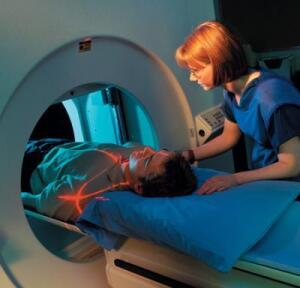by
Brendon Nafziger, DOTmed News Associate Editor | August 15, 2011
Doctors in an academic hospital's busy emergency room judged a patient's medical history and a physical exam more valuable than high-tech tests, like CT scans, in helping to reach a correct diagnosis, according to a new study.
The study, carried out in Israel and published in the Archives of Internal Medicine, found that 90 percent of all correct diagnoses made over a 53-day period involved only a physical exam, patient's history and basic tests, such as blood and urine tests, ECG or a chest X-ray.
"In conclusion, four of five of internal medicine inpatients could be accurately diagnosed close to their admission on the basis of little other than the traditional clinical information," write the authors, led by Dr. Ami Schattner, with the Kaplan Medical Center in Rehovot, Israel.



Ad Statistics
Times Displayed: 186622
Times Visited: 4999 For those who need to move fast and expand clinical capabilities -- and would love new equipment -- the uCT 550 Advance offers a new fully configured 80-slice CT in up to 2 weeks with routine maintenance and parts and Software Upgrades for Life™ included.
In the study, a senior resident with at least 4 years training and hospitalists with more than 20 years experience separately evaluated the same patient. Senior residents made correct diagnoses in 80 percent, and hospitalists in 84 percent of all the 442 newly admitted patients evaluated in the study.
Of all the tools used by the doctors, history was the most "potent," deemed valuable for making the proper diagnosis on admission 20 percent of the time. Physical examinations, by themselves, were not highly regarded, deemed to have been useful in making diagnoses only 1 percent of the time, according to the study. But history's diagnostic power doubled when it was combined with exams, doctors said, making it useful in 40 percent of all diagnoses in the study.
Few patients in the study had advanced imaging tests. Those who did, mostly had head CT scans, the researchers said. Even so, CT scans were judged useful for only about one-third of patients who got them, according to the study. (All told, imaging -- which in the study meant CT scans and ultrasound -- were deemed useful for correct diagnosis on admission in around 6 to 7 percent of all patients.)
"Our results do not mean that sophisticated studies need not be used after admission, but they do suggest that their choice should be guided by the clinical data on presentation," the authors said.
In an accompanying note, Dr. Rita F. Redberg, the editor of the journal, said the study "reminds us of the value of lower-tech ways of making a diagnosis of patients seen in the emergency department."
But in a separate response, Dr. Melvin Cheitlin, a cardiologist at the University of California, San Francisco, said he would have liked to see two extra bits of information: the number of hospitalists involved in the study, and a list of the diagnoses made and missed by the doctors.
"The high diagnostic accuracy using predominantly the traditional tools of history, physical examination, and basic laboratory tests would be less exciting if the majority of the patients had asthma, upper respiratory tract infections, urinary tract infections, or psychological problems," he wrote in the journal.
Nonetheless, he said when he first read the article, "I mentally recognized that 'I knew it all along.'"
"As a teacher of medical students, house staff and cardiology fellows I have become increasingly aware that there has been ever decreasing time spent teaching the basic skills of history taking and physical examination," he said.

